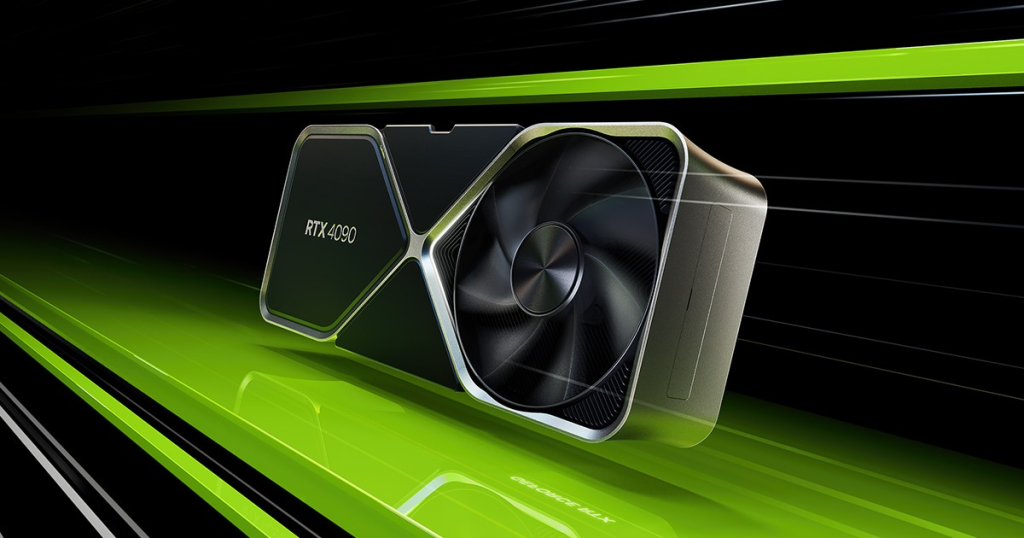In the world of high-performance graphics, the Nvidia RTX 4090 and RTX 4080 stand as titans of their generation. These GPUs, built on the groundbreaking Ada Lovelace architecture, represent the pinnacle of Nvidia’s graphics technology. From enhanced core counts to advanced memory capabilities, they promise exceptional performance. But with their need for robust power and cooling, how do they really stack up? Let’s dive into their features and performance to see which card deserves your attention.
Next-Gen Architecture and Design
The RTX 4000 series marks a significant leap in Nvidia’s GPU evolution. The Ada Lovelace architecture, built on TSMC’s advanced 5nm process node, brings notable advancements. This generation sees a dramatic increase in CUDA cores, clock speeds, and memory capabilities, setting a new benchmark for graphics performance.
The Ada Lovelace Advantage
The Ada Lovelace architecture introduces several key improvements over its predecessors:
- Increased CUDA Cores: Both the RTX 4090 and RTX 4080 benefit from a substantial boost in CUDA cores, enhancing their ability to handle complex computations and rendering tasks.
- Enhanced Clock Speeds: Higher clock speeds contribute to better overall performance, enabling smoother gameplay and faster processing.
- Advanced RT and Tensor Cores: With third-generation RT cores and fourth-generation Tensor cores, these GPUs excel in ray tracing and AI-driven tasks, supporting technologies like DLSS 3.
It’s also worth noting that Nvidia has phased out NVLink support in this series, effectively ending the era of SLI gaming that had seen limited adoption in recent generations.
Nvidia RTX 4090

Unleash top-tier gaming and creative power with the Nvidia RTX 4090. Built for those who demand the absolute best, this GPU delivers unparalleled performance for 4K gaming and intensive applications.
Nvidia RTX 4080

The Nvidia RTX 4080 offers impressive performance and efficiency for high-end gaming and productivity. It’s the perfect choice for those looking to balance power and value without compromising on quality.
Power Requirements and New Standards
The RTX 4090 and RTX 4080 require a new 16-pin power connector, known as the 12VHPWR connector. This connector provides a more efficient power delivery compared to traditional cables.
Power Connector Insights
- 16-Pin Power Connector: This new standard offers greater power delivery capabilities, necessary for the high demands of these GPUs.
- Adapters for Older PSUs: For those with older power supplies, adapters are available to connect multiple eight-pin PCIe cables. Ensure these adapters are properly installed to avoid issues.
Comparing the Powerhouses
To help you make an informed decision, here’s a detailed comparison between the RTX 4090 and RTX 4080:
| Feature | Nvidia RTX 4090 | Nvidia RTX 4080 |
|---|---|---|
| GPU Architecture | Ada Lovelace | Ada Lovelace |
| CUDA Cores | 16,384 | 9,728 |
| Boost Clock Speed | 2.52 GHz | 2.51 GHz |
| Base Clock Speed | 2.23 GHz | 2.21 GHz |
| Memory | 24 GB GDDR6X | 16 GB GDDR6X |
| Memory Speed | 22 Gbps | 21 Gbps |
| Memory Bandwidth | 1,008 GB/s | 672 GB/s |
| TDP | 450W | 320W |
| Transistors | 76.3 billion | 45.9 billion |
| Ray Tracing Cores | 144 | 112 |
| Tensor Cores | 576 | 448 |
| Output Ports | HDMI 2.1, DP 1.4a | HDMI 2.1, DP 1.4a |
| PCI Express | PCIe 4.0 | PCIe 4.0 |
| Release Date | Q4 2022 | Q4 2022 |
| Price (MSRP) | $1,499 | $1,199 |
Performance Breakdown
Benchmark Analysis
The RTX 4090 and RTX 4080 excel in various benchmarks, but the differences are clear:
- 3DMark Time Spy: The RTX 4090 scores over 31,000 points, while the RTX 4080 scores around 25,000, showcasing a significant performance leap.
- 3DMark Port Royal: Here, the RTX 4090 achieves nearly 26,000 points, surpassing the RTX 4080’s nearly 18,000 points.
Gaming Performance
In gaming scenarios, both GPUs deliver exceptional results:
- Cyberpunk 2077: At 4K Ultra settings, the RTX 4090 achieves around 80 FPS, whereas the RTX 4080 hits close to 60 FPS.
- Ray Tracing: The RTX 4090 handles ray tracing with ease, averaging over 30 FPS, while the RTX 4080 performs well but falls short of the 4090’s capabilities.
The Role of DLSS 3 in Performance
Nvidia’s DLSS 3 technology enhances frame rates by generating new frames based on game data and previous frames. This results in a smoother experience, especially with ray tracing enabled. However, while DLSS 3 can significantly boost performance, it may sometimes introduce visual artifacts, particularly in scenes with heavy HUD elements.
Conclusion: Which GPU is Right for You?
The Nvidia RTX 4090 and RTX 4080 represent the best of Nvidia’s graphics technology. The RTX 4090 offers unparalleled performance, making it the top choice for enthusiasts seeking the best possible gaming experience. However, the RTX 4080 provides excellent performance at a lower price point, making it a strong contender for those who want high-quality graphics without the premium cost.
As the demand for high-performance GPUs continues to grow, especially for gaming and AI applications, both of these GPUs offer exceptional value. Choosing between them depends on your specific needs and budget.

Leave a Reply
You must be logged in to post a comment.